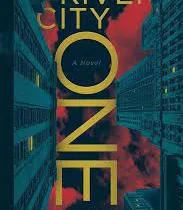The Iranian nuclear deal was thought to have finally eased tensions with the West and stave off a nuclear threat from the Persian Gulf region. But did it really mark the start of Iran’s newfound ability and willingness to engage with the West? Published before the deal, Ilan Berman in Iran’s Deadly Ambition argues that the Iranian nuclear deal would represent one of many actions that reveals Iran’s true quest for global power. In dispelling the optimistic hopes of the West, Berman asserts that the threat never really emanated from Iran’s nuclear program in particular, but rather from the Iranian regime itself. Despite the “success” of the nuclear deal, Washington must now correct its misguided assumptions about how Iran operates.
Berman introduces the book with problems he expects the United States to encounter with Iran based on Western actions towards the regime thus far. For one, the United States and the European Union have imposed economic sanctions on Iran specifically in the hope that it would spur diplomacy on the nuclear program. However, Iran partially avoided sanctions through their foreign importers (p. 4). Along with this initial example of Iran unburdening itself from Western influence, Berman exposes Iran’s ideology and reveals the Obama administration’s misperceptions of the regime’s actions. He reminds us that Iran sustains ideological tenets that emphasize antagonism with the West, and several foreign policy tenets emerge from this ideology. After his introduction, each chapter then outlines Iran’s relations with various countries and regions, characterized by Iran’s attention to economic gain and ideological promulgation.
Chapters 1, 2, and 3 explore implications of Iran’s ideology. Iran portrays itself as a revisionist power, obligated to remake its immediate region and to assert an ideological claim to a “manifest destiny” as a global caliphate (p. 12). From this ideology emerge foreign policy tenets that include Iran’s commitment to aid destabilization and rebellions in neighboring countries, empower Shia minorities, and acquire missile power for a global reach. As an example, after the Iran-Iraq War, Iran became a hub for “global resistance” revolutionaries by opening its borders to various third-world radicals (p. 13). Additionally, the national army Islamic Revolutionary Guard Corps (IRGC) slowly garnered control over much of the economy and received access to an arsenal of ballistic missiles after the death of Ayatollah Khomeini. There is significant fear that the Iranian regime could move from being a regional missile power to a global one (p. 18). Iran also continues to loyally support Syria in perpetuating a “front line defense against Western aggression” (p. 41), and recruits Afghan refugees to fight in Syria. In these chapters, Berman illustrates how Iran’s ideological commitment to become a global caliphate requires that it supplant the regional status quo through dominating the Sunnis, terrorizing Israel (p. 58), and diminishing the Western influence while striving to become a supreme hegemon.
Chapter 4 discusses Europe’s engagement with Iran and its diminishing consensus and ability to isolate and pressure Iran, due to domestic politics and the enticement of normalized economic trade. Similar to the U.S., Europeans have been blind to disconcerting Iranian activity such as their work on a ballistic missile arsenal and persistent signs that their nuclear project has a military aspect (p. 69). Chapters 5, 6, and 7 articulate Russia, North Korea, and Venezuela as key enablers of Iran’s nuclear ambitions. China is also noted as a key financial channel for the Iran Revolutionary Guards’ activities (p. 97). Chapter 8 discusses Hezbollah’s influence as well as Iran’s relations with Africa, in the way Iran exploits countries like Sudan and Eritrea for strategic bases of operation (p. 137). Chapter 9 touches on Iran’s increasingly aggressive cyberspace presence through hacking collectives like Ashiyane, who is supposedly aligned with the IRGC (p. 151). Iran’s cyber capabilities continue to advance.
On January 16, 2016, the International Atomic Energy Agency (IAEA) verified that Iran’s nuclear program would remain peaceful. This historic deal understandably caused the West to believe detente between Iran and the United States was around the corner. However, Iran’s ideology, global focus on strengthening its economy and aiding rebellions paint a different picture. The West inaccurately interprets Iran’s power by turning attention away from signs that indicate Iran’s persistent desire for global control. Most importantly, while the Obama administration strives to normalize relations with Iran, it misunderstands the regime’s intentions. Berman persuades how foolish it is to conclude that eased relations between these two countries are based solely on Iran’s willingness to engage diplomatically, evidenced through the nuclear deal. Diminishing Western attention on Iran’s influence, as well as the false hope that Iran’s ideology may change, are seen most clearly in Pentagon reports Berman references. A report in 2010 accurately portrays Iran’s strength and influence in the Middle East. By contrast, a report from 2014 complements the Obama administration’s engagement with Iran by showing minimal attention to Iran’s influence and ideology (p. 22).
Essentially the nuclear deal reveals the disingenuousness and pliable nature of Iran’s leadership and regime. Iran’s agreement on the nuclear deal represented an effort to decrease the effects of Western-imposed political isolation and economic pain from sanctions, rather than accepting any ideological transformation (p. 9). And, despite Iranian President Hassan Rouhani publicly stating that the relationship with the United States would be completely different following the nuclear deal (p. 164), trusting him is difficult. President Rouhani made hopeful promises to the country during his presidential campaign in 2013, yet those unmet promises and the regime’s intentions for an agreement on the nuclear deal cannot be overlooked.
Throughout Iran’s Deadly Ambition, Berman clearly outlines Iran’s history and global connections, which allows readers with relatively little knowledge on the subject to gain understanding. This book offers a practical, brisk read on the near-current state of Iran, and Berman speaks from a wealth of knowledge on regional security in the Middle East, Central Asia, and the Russian Federation. He serves as Vice President of the American Foreign Policy Council and has consulted for the Central Intelligence Agency and the U.S. Department of Defense, among other organizations. Though Berman speculates at times, his conjecture of Iran’s hidden motives are astute and leave one feeling undeniably concerned about Iran’s spiraling intents for global control. Berman’s crucial look into Iran’s underestimated yet increasingly paramount ideology should not go undetected by U.S. policy since a blindsided or apathetic U.S. eye could be perilous.
—
Jessica Meyers is an intern for Providence. She studied at Westmont College, with a focus on Political Science and English.
Photo Credit: Commandos of 64th Airborne Special Forces Brigade of Iran exercising. By Hossein Zohrevand via Wikimedia Commons.






 Sponsor a student for Christianity & National Security 2024
Sponsor a student for Christianity & National Security 2024